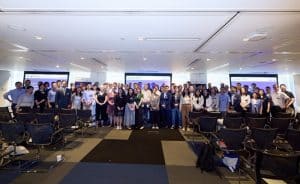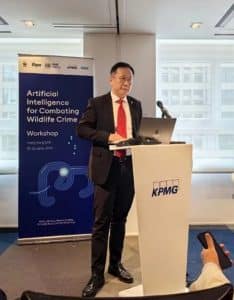The “Artificial Intelligence for Combating Wildlife Crime Workshop”, co-organized by the World-Wide Fund for Nature (WWF) and the International Fund for Animal Welfare (IFAW), took place from 25 to 26 June in Hongkong. The workshop aimed to establish an action-oriented public-private platform to advance the use of AI in detecting and combating wildlife crime, fostering broader collaboration on conservation efforts and other global development priorities.
Wildlife trafficking ranks as the fourth largest criminal activity globally, following drugs, human trafficking, and arms trafficking. Illegal wildlife trade also exploits e-commerce platforms. During the long-term monitoring of online wildlife trade, it was observed that suspected traffickers attempt to evade law enforcement and platform surveillance by avoiding keywords for endangered species, opting instead of only display product photos in the online advertisements.
Traditional methods like keyword searches and blocking are increasingly inadequate, while manual image screening remains time-consuming and labor-intensive. New technologies are urgently needed to enhance monitoring and prevention of online wildlife trafficking.
Moreover, for trafficked live animals, many of which are endangered species, rescued by frontline officials at airports, national borders, or maritime hubs often represents their last chance to return to the wild.
Unfortunately, not every trafficked animal receives this opportunity. Frontline officers manage numerous daily shipments, making it routine to select which items to inspect thoroughly. Shipments containing live animals can be easily overlooked and left uninspected. A targeted technological approach is essential to help these officers identify when and where they are most likely to find concealed trafficked wildlife.

AI offers a potential solution.
AI technologies can provide valuable insights for biodiversity conservation, detect and identify the causes of biodiversity changes, and help us prioritize and plan conservation efforts.
As mentioned above, wildlife trafficking is one of the major threats to biodiversity. With the development of Internet technology, its forms have become more diverse and complex. Major countries now classify wildlife trafficking as a serious environmental crime. Consequently, more posts featuring wildlife products and live animals have moved to online platforms and social media in a more concealed way.
However, AI is not a magical solution to wildlife trafficking; it is just one potential component of a multifaceted solution. As AI continues to develop, there are many actions we can take to help animals caught in the illegal wildlife trade. In addition to advocating for better policies and tighter restrictions on wildlife trafficking and reducing the demand for trafficked animals, there is an urgent need to provide better training, equipment, and resources to the frontline police officers and rangers who address this issue daily.

The workshop brought together experts, policymakers and stakeholders from various sectors to share their practices and insights.
Inspired by the United Nations’ AI for Good initiative, the main goal of the workshop was to share best practices from different sectors in applying AI to combat illegal wildlife trade, and to jointly develop collective action strategies and potential new funding to combat wildlife trafficking at source sites and along supply chains.
The two-day event was hosted by representatives from the WWF Beijing Office, with nearly 150 participants attending both in person and online. Representatives from Chinese Internet companies such as Tencent, Baidu and Alibaba shared their perspectives on using AI to comprehensive manage illegal online trade and create a wildlife friendly network.
Liu Song, IWT Project Director of WWF Beijing Office, discussed how AI technology can reduce the demand for illegal wildlife products through precision social marketing. He illustrated with real cases that AI data analysis combined with behavior change theory models can create customized marketing content on social media platforms, accurately reaching potential consumer groups and optimizing delivery strategies in real time.

Zhou Fei, deputy director general of WWF Beijing, stated that WWF has been committed to exploring innovative solutions with technology companies, such as:
- Promoting cross-sector collaboration and youth innovation on the topic of technology to prevent illegal wildlife trade, which is also an important part of the workshop.
- Providing wildlife conservation-related knowledge content support for large language models;
- Cooperating with members of the Internet Enterprise Alliance to curb illegal online transactions and other clean-up actions;
- Conducting precisely customized social media activities based on big data technology to prevent illegal wildlife trade through multiple channels, reducing the demand for endangered species products among target groups.
“Artificial intelligence has become a powerful partner in the fight against wildlife crime,” Zhou concluded, “We believe that the innovative combination of nature-based solutions and artificial intelligence can help us create a future where wildlife can thrive.”
Conclusion
At CDB, the “Artificial Intelligence for Combating Wildlife Crime Workshop” in Hong Kong gathered global experts and stakeholders to explore AI’s pivotal role in addressing wildlife trafficking. Discussions focused on pioneering strategies like precision social marketing and cutting-edge monitoring technologies. This collaborative effort aims to leverage AI to safeguard biodiversity and combat illegal wildlife trade effectively, marking a crucial milestone in advancing global wildlife conservation efforts.



